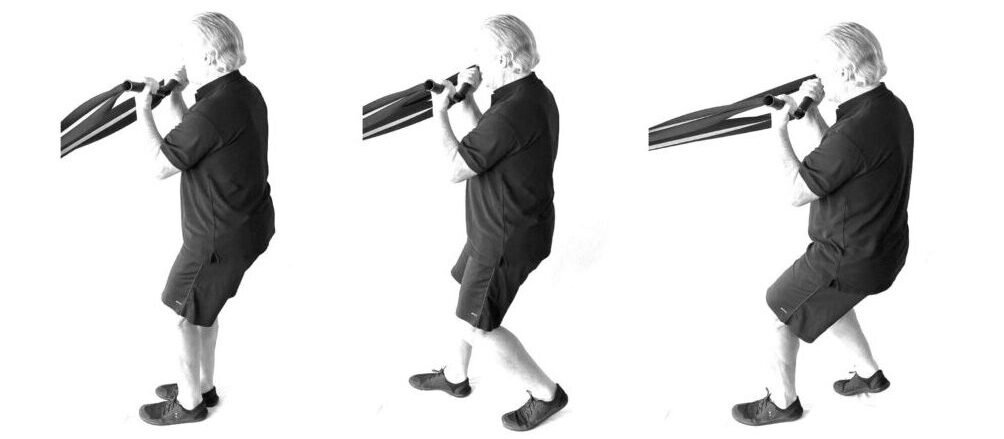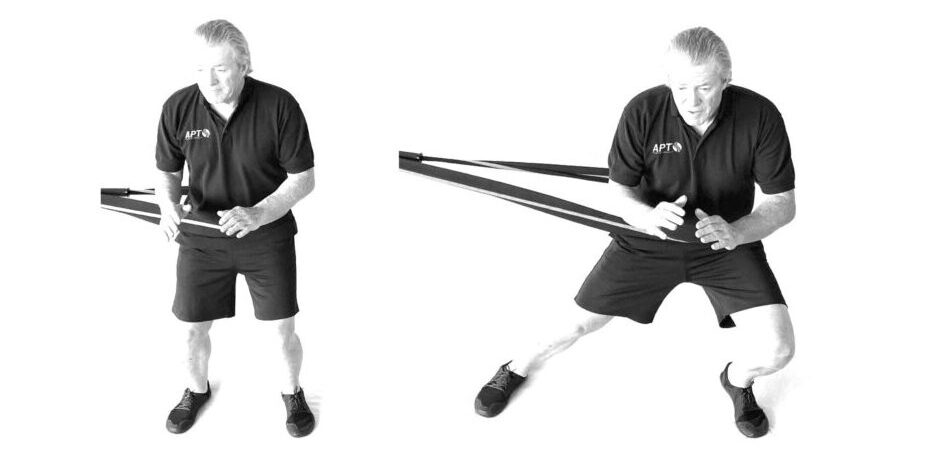The 1st United States Patent for an elastic resistance anchor point training system was granted in 1897. 
In the 20th century, convenience and cost made resistance bands popular with home programs and group training. For Physiotherapists the scalable resistance, versatility of angles and convenience made bands a valuable, even essential tool. Unfortunately, when it came to the serious task of training performance, resistance bands were seriously misunderestimated by most trainers for almost 100 years
In the 21st-century trainers that specialize in athletic performance have started taking training with elastic resistance to the next level. This evolution has been driven by the development of new elastic resistance tools. The development of longer, heavier, and safer bands accompanied by more versatile solutions for anchoring and connecting with resistance has opened up the possibilities of this unique and versatile resistance.
Understanding the unique nature of elastic resistance is the first step to getting the most out of bands. All trainers understand elastic resistance gets stronger as the band is stretched, but how to exploit that characteristic is not well understood.
Most trainers don’t appreciate that the rate of increase in resistance increases as the band is stretched and that the rate of change in resistance is determined by the length of the band. A longer band offers both a more gradual change in resistance and a longer range of motion. This is particularly useful for training on your feet with anchored resistance. Shorter bands that become stronger more quickly are useful for shorter ranges of motion and isometric exercises.
With anchored bands, the resistance is determined by the distance from the anchor point. Any range of motion can be trained with appropriate amounts of force simply by changing the distance between the connection and the anchor point. Distance is resistance.
An eight-foot-long resistance band has approximately 2 times more gradual change in resistance than a similar material and strength in a five-foot band. This means working with the longer resistance band offers a more gradual change in resistance and a longer range of motion.
This continual increase in resistance means that movements away from the anchor don’t carry momentum. This means fast, explosive moves, can be trained with resistance without carrying any momentum. Or conversely, bands can be used to assist acceleration. (While there is useful work to be done with over speed be mindful of the strength of the stretched band and ensure movements are controlled through all phases.)
This property of gradually increasing resistance also means additional load can be created to train with higher resistance for the eccentric phase as the additional load can be created by using body weight to lean/step/lunge away from the anchor point to create additional resistance for the eccentric phase of the movement. This can be an effective way to add load for isometric training as well as the eccentric part of the movement.
Consider a standing biceps curl with an anchored band. Establish the distance for a maximum effort concentric contraction, the curl, and then with the curl locked in at the strongest part of the ROM back away from the anchor creating additional resistance.
The idea of this technique is to simply use the legs to move the connection point further away from the anchor point to create resistance beyond the capability of the arms concentric contraction and so working the eccentric with more resistance.
Training virtually every movement with useful resistance by simply changing orientation to the anchor means exercises can be efficiently progressed. Note how the open stance lunge below changes the angle for the curl to side on while offering a cross body row, useful, accessible variety.
The consistent increase/decrease in resistance also means precise amounts of isometric force can be created that efficiently provide precise consistent or variable resistance from a variety of angles. Isometric exercises can be developed that effectively provide precise resistance and angle changes by simply changing the distance and orientation to the anchor point(s).
The longer range of motion of a longer band provides the ability to create larger movements, work movement patterns through the entire range with more appropriate resistance, accommodating presses and rows with lunges.
Anchored elastic resistance can be used with a variety of connection devices besides handles. Belts, harnesses, straps, and bars can be incorporated to create the specific resistance and connection for progression and specific needs.
Using a variety of angles with various resistances and a variety of connections offers training of both movement and stability in all movement patterns that can be resisted including training movements that require forces to be moved or resisted in more than one dimension.
Don’t misunderestimate resistance bands, they may be old but they keep getting better.

